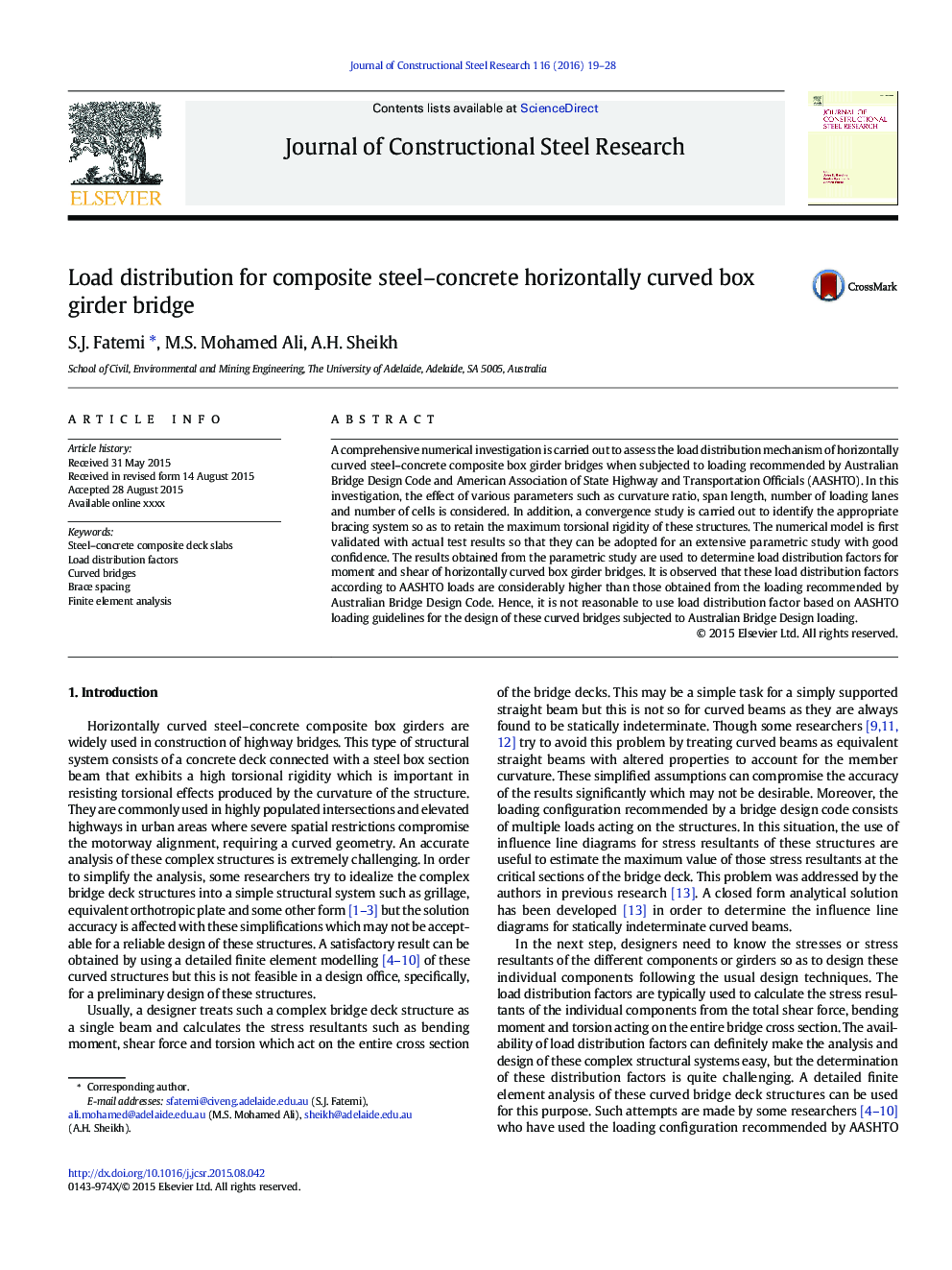| Article ID | Journal | Published Year | Pages | File Type |
|---|---|---|---|---|
| 6751687 | Journal of Constructional Steel Research | 2016 | 10 Pages |
Abstract
A comprehensive numerical investigation is carried out to assess the load distribution mechanism of horizontally curved steel-concrete composite box girder bridges when subjected to loading recommended by Australian Bridge Design Code and American Association of State Highway and Transportation Officials (AASHTO). In this investigation, the effect of various parameters such as curvature ratio, span length, number of loading lanes and number of cells is considered. In addition, a convergence study is carried out to identify the appropriate bracing system so as to retain the maximum torsional rigidity of these structures. The numerical model is first validated with actual test results so that they can be adopted for an extensive parametric study with good confidence. The results obtained from the parametric study are used to determine load distribution factors for moment and shear of horizontally curved box girder bridges. It is observed that these load distribution factors according to AASHTO loads are considerably higher than those obtained from the loading recommended by Australian Bridge Design Code. Hence, it is not reasonable to use load distribution factor based on AASHTO loading guidelines for the design of these curved bridges subjected to Australian Bridge Design loading.
Related Topics
Physical Sciences and Engineering
Engineering
Civil and Structural Engineering
Authors
S.J. Fatemi, M.S. Mohamed Ali, A.H. Sheikh,
